Why settle for traditional methods when innovative solutions exist right at our doorstep? The Bay Area, a hub for forward-thinking and transformative health approaches, is leading the charge in psychedelic-assisted therapy. This groundbreaking treatment combines modern psychology with ancient wisdom, offering new hope to those struggling with mental health issues. As we dive into the world of psychedelic-assisted therapy, we uncover not just its potential benefits but also how it’s reshaping our understanding of healing and well-being. Whether you’re a long-time advocate or newly curious, the journey into this emerging field of assisted psychotherapy promises insights and possibilities that could change lives, approach mental health disorders, and consider risks. Let’s explore what makes the Bay Area a beacon for this revolutionary approach to mental health.
Key Takeaways
- Psychedelic-assisted therapy is an innovative approach to mental health treatment, evolving to meet the needs of patients in the Bay Area, with substances like psilocybin leading the charge.
- The process of psilocybin therapy, emphasizing preparation, the psychedelic experience, and integration, highlights the importance of a structured approach to maximize therapeutic outcomes.
- Understanding the essentials of therapy integration is crucial for patients and therapists alike, as it ensures the insights gained during psychedelic experiences are effectively incorporated into one’s daily life.
- Despite its potential, psychedelic-assisted therapy faces research challenges, including regulatory hurdles and the need for more comprehensive studies to better understand its effects and mechanisms.
- Safety and risk management are paramount in psychedelic-assisted therapy, with thorough screening of candidates and professional guidance being essential to mitigate potential adverse effects.
- The legal landscape and future outlook for psychedelic-assisted therapy are rapidly evolving, with increasing interest in developing personalized treatment plans that cater to individual needs, as evidenced by real-world success stories.
Psychedelic Therapy Evolution
Historical Overview
Psychedelics have a long history, dating back to ancient rituals and ceremonies. These substances were revered for their ability to induce profound spiritual experiences. Fast forward to the 1950s and 60s, this era marked a significant chapter in psychedelic research. Scientists explored psychedelics’ potential in mental health treatment, including assisted psychotherapy, sparking widespread interest.
However, societal reactions were mixed. The growing popularity of psychedelics among the youth raised concerns, leading to strict legal restrictions. This period saw groundbreaking studies on psychedelics and assisted psychotherapy but also the beginning of a long hiatus in research.
Modern Resurgence
The 21st century witnessed a remarkable revival of interest in psychedelic studies. A few key studies played pivotal roles in reigniting scientific and public enthusiasm. Researchers demonstrated psychedelics’ efficacy in treating conditions like depression and PTSD, challenging previous misconceptions.
Technological advancements have been crucial in this resurgence. They’ve allowed for more precise study of psychedelics’ effects on the brain. Changing societal views have also contributed, with more people now recognizing the therapeutic potential of these substances.
Bay Area Focus
The Bay Area has always been at the heart of psychedelic culture and research. In the 1960s, it was a hub for psychedelic exploration and remains influential today. Institutions like the Multidisciplinary Association for Psychedelic Studies (MAPS) are leading efforts in psychedelic-assisted therapy research.
Current Bay Area researchers are making significant strides in understanding psychedelics’ therapeutic benefits. Local initiatives and community support play vital roles in advancing this field. The region’s historical significance continues to inspire new generations of researchers and advocates.
Key Psychedelic Medicines
Psilocybin Insights
Psilocybin dramatically alters the brain’s connectivity patterns. This change can significantly reduce symptoms of depression. Recent clinical trials have shown promising results, with many participants experiencing long-term relief from depressive episodes.
Researchers derive psilocybin from certain mushroom species, known historically for their sacred use in various cultures. This natural source and its cultural significance add depth to its modern therapeutic exploration.
MDMA Explained
MDMA holds great promise for individuals suffering from PTSD. It facilitates emotional processing by increasing feelings of empathy and reducing fear responses. This unique mechanism is why many therapists champion its use.
Currently, Phase 3 trials are underway, closely monitored by the FDA. The agency’s involvement underscores MDMA’s potential to become a sanctioned treatment option, marking a significant milestone in psychedelic-assisted therapy.
LSD Benefits
LSD offers hope for treating several mental health issues, including anxiety and depression. Its ability to induce profound psychological changes has made it a subject of renewed research interest.
The psychedelic movement of the 1960s first highlighted LSD’s therapeutic possibilities. Now, recent studies confirm its potential benefits in managing existential distress among patients facing life-threatening diseases.
Ketamine Use
Ketamine acts quickly to alleviate depressive symptoms, offering hope where other treatments fail. The FDA’s approval of esketamine nasal spray represents a major advancement in treating depression, especially forms resistant to traditional medications.
While some know ketamine for its recreational use, therapeutic protocols are strictly regulated and administered under professional guidance. This distinction ensures patient safety and maximizes treatment efficacy.
Psilocybin Therapy Process
Preparation Phase
Before diving into the depths of psilocybin therapy, individuals undergo a crucial preparation phase. This stage focuses on setting intentions and establishing a foundation of trust with the therapist. These intentions act as guiding lights for the journey ahead, ensuring that both the patient and therapist are aligned in their goals.
Pre-therapy sessions play a vital role in mentally and emotionally preparing individuals. They offer a safe space to discuss fears, expectations, and hopes regarding the therapy. Common preparatory practices include meditation and journaling. These activities help calm the mind and foster self-reflection, setting the stage for a transformative experience.
Therapeutic Session
A typical psychedelic-assisted therapy session unfolds in a carefully controlled environment. This setting ensures safety and encourages open exploration of one’s psyche under the influence of psilocybin. The session structure often includes initial relaxation techniques followed by ingestion of the psychedelic substance, with music or guided imagery sometimes aiding the process.
The importance of a supportive environment cannot be overstated. It allows individuals to fully surrender to the experience without fear of judgment or harm. During this time, therapists play a passive yet crucial role. They provide reassurance and grounding if needed but primarily observe, allowing the individual’s inner healing intelligence to guide the journey.
Integration Importance
Following a psychedelic experience, integration emerges as a key component for achieving lasting therapeutic benefits. This phase involves making sense of insights gained during the session and applying them to daily life. Without proper integration, profound experiences risk becoming fleeting memories instead of catalysts for real change.
Integrating psychedelic experiences poses challenges due to their profound and often ineffable nature. Individuals may struggle to reconcile these experiences with their everyday reality. Follow-up sessions with therapists become essential during this period. They offer guidance on weaving insights into one’s life fabric, fostering personal growth and healing.
Therapy Integration Essentials
Integration Techniques
Integration techniques play a crucial role in maximizing the benefits of psychedelic-assisted therapy. Journaling is one such technique, allowing individuals to capture insights and emotions experienced during sessions. It serves as a reflective practice, helping to process complex thoughts.
Art therapy offers another avenue for expression. It enables individuals to externalize their inner experiences through creative mediums. This can be particularly therapeutic for those who find it hard to articulate their feelings verbally.
Group discussions offer a sense of community and shared understanding. They provide a supportive environment where individuals can share their experiences and learn from others. The importance of community and support groups cannot be overstated during the integration phase.
Mindfulness practices, including meditation and breathing exercises, are essential for maintaining the connection to the therapeutic experience. They help ground individuals in the present moment, fostering an ongoing sense of peace and awareness.
Long-term Benefits
Research into psychedelic-assisted therapy has uncovered significant long-term psychological benefits. Studies highlight notable improvements in mental health conditions such as depression, anxiety, and PTSD. These benefits often persist long after the therapy sessions have concluded.
One of the most profound changes reported by participants is a shift in perspective. Many express feeling more open and connected to their emotions, leading to increased emotional openness. This openness can pave the way for deeper personal relationships and an enhanced ability to navigate life’s challenges.
Improved relationships emerge as another key benefit. Participants often report feeling more empathetic and connected to loved ones. This can lead to healthier interactions and stronger bonds.
The potential for sustained mental health improvements is perhaps the most promising aspect of psychedelic-assisted therapy. Many individuals experience lasting relief from symptoms that were previously unmanageable with traditional therapies alone.
Research Challenges
Ethical Considerations
Researchers face ethical dilemmas when it comes to psychedelic-assisted therapy. One major concern is ensuring that all participants have full accessibility and provide informed consent. This means they must understand the potential risks and benefits before participating. It’s crucial that individuals are not coerced or misled into joining a study.
Another vital aspect is the training and qualifications of therapists. They play a key role in guiding participants through their experiences. Therefore, rigorous training programs are necessary to prepare them adequately. This ensures the safety and well-being of participants.
Lastly, given the potent effects of psychedelics, establishing ethical guidelines is paramount. These should address potential risks such as psychological distress or misuse of substances. Such measures protect both researchers and participants throughout the study process.
Scientific Hurdles
One of the main challenges in scientific research on psychedelic-assisted therapy is standardizing dosages and protocols. Psychedelics affect everyone differently, making it hard to establish uniform treatment plans. Researchers work diligently to find common ground, but variability remains a significant hurdle.
Conducting double-blind studies with psychedelics poses another challenge. It’s difficult for both researchers and participants not to know who has received a placebo versus the actual psychedelic substance due to its profound effects. This can skew results and make findings less reliable.
Moreover, there’s a need for broader acceptance within the scientific community. Despite growing evidence supporting its benefits, controversies still surround psychedelic research. Skepticism among scientists can hinder progress and limit funding opportunities for further studies.
Safety and Risks
Psychological Safety
Screening for a participant’s mental health history is crucial. It helps identify individuals who may not be suitable for psychedelic-assisted therapy. This step is vital to minimize risks and ensure the safety of all involved.
Therapists employ various strategies to reduce the risk of adverse reactions. They create a supportive environment that fosters trust and openness. This setting plays a key role in ensuring psychological safety during sessions. Participants feel more secure, reducing anxiety levels and potential negative experiences.
The therapeutic setting is another pillar of psychological safety. It includes both the physical space and the emotional atmosphere created by the therapist. A calm, comfortable, and controlled environment supports positive outcomes. It makes participants feel safe to explore their thoughts and emotions under the influence of psychedelics.
Physical Health Concerns
Psychedelic substances can have physical side effects. These range from mild to severe, depending on the individual’s health status and the substance used. Common side effects include nausea, increased heart rate, and changes in blood pressure.
Before participating in psychedelic-assisted therapy, medical screening is essential. It identifies any contraindications that could put an individual at risk during therapy sessions. For example, people with certain heart conditions or pregnant women may be advised against participating.
Monitoring physical health during sessions is also critical. Therapists follow guidelines to keep track of vital signs and any physical discomfort experienced by participants. This monitoring ensures that any adverse physical reactions are addressed promptly, maintaining the safety of the therapy process.
Legal and Future Outlook
Current Legal Status
The Bay Area, known for its progressive stance on many issues, reflects a growing trend in the United States towards the decriminalization of psychedelics. Cities like Oakland and Santa Cruz have led the way by declaring that law enforcement should not prioritize arrests for possession and use of entheogenic plants, including psilocybin mushrooms. This shift has significant implications for both research and therapy within the region.
Nationally, the conversation around psychedelics has evolved rapidly. The U.S. Food and Drug Administration (FDA) has recognized the potential benefits of these substances by granting “breakthrough therapy” designation to MDMA for PTSD treatment and psilocybin for depression. This designation is a signal of change, indicating a regulatory pathway that could expedite the development and review of drugs that demonstrate substantial improvement over existing treatments.
Potential Developments
Looking ahead, the landscape of psychedelic-assisted therapy is poised for transformation. Legal changes are just one piece of a larger puzzle that includes societal acceptance and medical advancement. As legal barriers fall, we can anticipate an expansion in the range of conditions treated with psychedelics beyond current indications like PTSD and depression. Anxiety, addiction, and even chronic pain are areas where psychedelics hold promise.
Accessibility remains a critical concern. Current models require trained therapists to guide sessions, limiting availability. Innovations in delivery methods or new therapeutic protocols could broaden access significantly.
Ongoing research projects continue to unveil potential new psychedelic compounds with unique therapeutic profiles. These discoveries could lead to more targeted treatments with fewer side effects. Moreover, universities across the country are establishing dedicated centers for psychedelic research, further accelerating our understanding of these powerful substances.
Personalized Treatment Plans
Tailored Approaches
In the realm of psychedelic-assisted therapy, individualized treatment plans stand as a cornerstone. They ensure that each patient’s unique psychological landscape is navigated with precision. Therapists in the Bay Area are adept at customizing sessions to meet the nuanced needs of their patients. This flexibility allows for adjustments based on real-time responses during therapy.
Different psychedelics and dosages play a critical role in these tailored approaches. For instance, psilocybin might be chosen for its profound impact on depression, while MDMA could be utilized for its effectiveness in treating PTSD. The dosage is carefully calibrated to maximize therapeutic benefits while minimizing potential side effects. Such personalized care is what sets assisted treatment programs apart, ensuring each patient’s journey is as effective as it is safe.
Success Story Examples
The Bay Area has witnessed numerous success stories stemming from psychedelic-assisted therapy. One patient, previously crippled by severe anxiety, found unparalleled relief after a series of psilocybin sessions. Their ability to confront and process deep-seated fears was transformative, marking a significant turn in their mental health journey.
Another remarkable case involved an individual battling chronic depression for decades. Through a meticulously planned program involving several LSD-assisted sessions, they experienced a profound shift in perspective. This not only alleviated their depressive symptoms but also reinstated a sense of hope and joy in their life.
These success stories highlight the diversity of conditions treatable through psychedelic-assisted therapy and underscore its potential to revolutionize mental health care. Moreover, they contribute significantly to shifting public perception and policy regarding the use of psychedelics in therapeutic settings. As more people share their positive experiences, societal stigma diminishes, paving the way for broader acceptance and support.
Real-World Success Stories
Patient Testimonials
Many individuals in the Bay Area have shared transformative experiences with psychedelic-assisted therapy. These firsthand accounts often highlight profound emotional and psychological insights. Patients report a newfound sense of clarity, diminished anxiety, and a deeper connection to their emotions. For some, this form of therapy has been a turning point after years of traditional treatments yielding minimal progress.
The role of these testimonials cannot be understated. They serve as powerful narratives that challenge existing prejudices against psychedelics. By sharing their journeys, patients contribute significantly to destigmatizing this innovative approach to mental health.
Clinical Outcomes
Recent studies underscore the effectiveness of psychedelic-assisted therapy in treating various mental health conditions. Clinical trials have shown notable improvements in symptoms of depression, PTSD, and anxiety among participants. For instance, a study published in 2021 revealed that 67% of patients experienced more than a 50% reduction in depression symptoms after undergoing psilocybin-assisted therapy.
These outcomes are not just numbers; they represent real changes in people’s lives. Such statistical improvements offer hope and validate the potential of psychedelics as powerful therapeutic tools. The significance of these findings lies in their ability to pave the way for new treatment avenues, offering relief to those who have struggled with conventional methods.
Closing Thoughts
Psychedelic-assisted therapy in the Bay Area is reshaping mental health treatment, offering new hope where traditional methods fall short. From the evolution of psychedelic therapy to real-world success stories, it’s clear this approach holds promise for those struggling with various mental health issues. The journey through understanding key medicines, the therapy process, and integration essentials underscores its potential. Yet, navigating research challenges, safety concerns, legal hurdles, and crafting personalized treatment plans demands expertise and care.
Your path to healing could be illuminated by these groundbreaking therapies. If you’re considering this option, seek professionals who specialize in psychedelic-assisted therapy. Their guidance can unlock doors to profound healing and transformation. Ready to take the first step towards a new chapter in your mental health journey? Reach out to a qualified therapist in the Bay Area today.
Frequently Asked Questions
What is psychedelic-assisted therapy?
Psychedelic-assisted therapy combines traditional psychotherapy with the use of psychedelics to enhance treatment outcomes for various mental health conditions.
Which psychedelics are commonly used in therapy?
Commonly used psychedelics in therapy include psilocybin (magic mushrooms), MDMA, and LSD, each offering unique therapeutic benefits.
How does the psilocybin therapy process work?
The psilocybin therapy process involves a preparation session, the guided psychedelic experience, and integration sessions to process insights and emotions.
What are the essentials of therapy integration?
Therapy integration involves discussing and making sense of the psychedelic experience, ensuring lasting positive changes in mental health and well-being.
What research challenges exist in psychedelic therapy?
Research challenges include regulatory hurdles, funding limitations, and the need for larger-scale studies to validate efficacy and safety.
Are there risks associated with psychedelic-assisted therapy?
Yes, potential risks include psychological distress during sessions, but these are generally manageable with proper screening and professional guidance.
What is the legal status of psychedelic-assisted therapy in the Bay Area?
As of my last update, certain cities have decriminalized psychedelics, but statewide and federal approval for therapeutic use is pending ongoing clinical trials.
How are personalized treatment plans developed in psychedelic-assisted therapy?
Personalized treatment plans are developed based on individual needs, health history, and specific mental health goals, ensuring tailored care.
Can you share any real-world success stories from psychedelic-assisted therapy?
While patient confidentiality limits specifics, many report significant improvements in conditions like PTSD, depression, and anxiety after undergoing psychedelic-assisted therapy.





